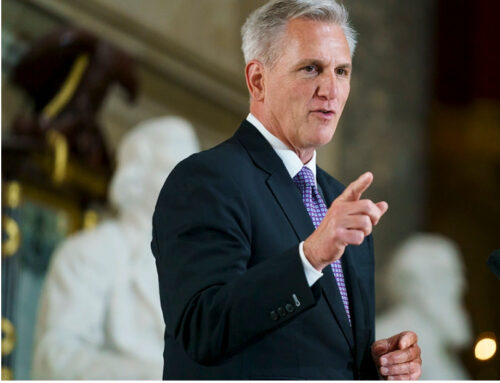Since the election of President Trump and the Republican-controlled Congress in 2016, the legislature, the courts, and the administration have taken actions and issued guidance in an effort to curtail the scope of the Affordable Care Act (“ACA”). The actions and guidance have been sporadic, making it difficult to determine their interrelation and import.
This white paper describes and explains the confusing array of incentives and payments that the ACA contemplates. It goes on to discuss the effect and interaction of government efforts to reduce these payments and to scale back the scope of the law.
Background
The ACA seeks to ensure that virtually every American has health insurance that provides coverage for an extensive list of medical conditions (“essential benefits”), such as maternity care and mental health services. The ACA imposes an “individual mandate” that requires every family and individual to have health insurance coverage. Families and individuals who receive comprehensive health coverage through their employers or under Medicare or Medicaid typically satisfy this mandate without further action.
As enacted, the ACA employs a carrot and a stick to incentivize and force uncovered families and individuals to acquire insurance coverage. The carrot provides a subsidy to families with income (in 2019) between $25K and $100K, subject to variation, to help them pay insurance premiums, reducing their out-of-pocket cost to obtain coverage. The stick imposes a penalty equal to 2.5% of adjusted gross income on families and individuals who do not have insurance coverage.
The ACA further prohibits insurance companies from denying coverage or charging higher premiums based on the poor state of the applicant’s health (pre-existing conditions). Unhealthy people are more likely to purchase insurance coverage than healthy people, because they are more likely to incur medical expenses in future years. Before the ACA, insurance companies compensated for this increased utilization risk by charging unhealthy individuals higher premiums or denying them coverage altogether.
Forcing healthy individuals into the insurance pool allows the insurance companies to spread the higher cost of insuring unhealthy individuals among the entire population, eliminating the need to charge higher premiums to unhealthy purchasers.
Shortly after Congress passed the ACA, opponents challenged the legislation as unconstitutional, asserting that Congress does not have the power to compel individuals to purchase insurance. Eight Supreme Court justices split on whether Congress has this power under the Commerce Clause of the Constitution. Chief Justice Roberts took a different tack. He held that the penalty imposed on people who do not buy insurance is a tax, which Congress has the power to levy under its taxing authority. National Federation of Independent Business v. Sebelius (2012).
Legislative actions scaling back ACA
At the end of 2017, Congress passed the Tax Cut and Jobs Act (“TCJA”), a sweeping rewrite of much of the Tax Code. A provision of the TCJA reduced the rate of the individual mandate penalty to zero. Thus, after the TCJA, families without insurance suffer no negative consequences, and thus have less incentive to purchase coverage. Middle-income families that do purchase insurance continue to receive a subsidy to help them pay the premiums.
Judicial actions scaling back the ACA
After the passage of the TCJA, opponents of the ACA filed a new legal action again challenging the law’s constitutionality. They asserted that, because Congress had effectively abolished the individual mandate penalty, the ACA no longer imposed a “tax” on non-compliant families. Thus Roberts’ rationale for upholding the ACA’s constitutionality now bore no weight. A federal district court in Texas agreed with this analysis and ruled the ACA unconstitutional. Texas vs. Azar, U.S. District Court of Texas (2018).
Supporters of the ACA will appeal this holding. Once again, the case is likely to reach the Supreme Court, which will consider the constitutionality of the ACA under a new set of facts.
Those supporting the ongoing constitutionality of the ACA assert that Congress did not in fact eliminate the penalty. Rather, Congress reduced the penalty (tax) rate to zero. The taxing provision itself remains and the reasoning of the original case continues to apply. Moreover, if Congress intended to strike down the ACA, it would have done so legislatively rather than merely reduce the penalty and hope for a favorable court decision.
Administrative actions scaling back the ACA
The Trump administration has taken actions and proposed regulations aimed at curtailing the application of the ACA.
Cease payment of “cost sharing reduction subsidies”
Typically, insurance policies with lower premiums require insureds to pay higher out-of-pocket costs (deductibles, co-pays, etc) when they incur medical expenses covered by the insurance policy. Conversely, higher premium policies require the insured to bear lower (or no) out-of-pocket costs. Both arrangements can saddle insureds with unaffordable outlays. To keep premiums low without imposing high costs on the insureds, the ACA requires insurance companies to issue policies with artificially low premiums and low out-of-pocket costs. The government, in turn, pays the company “cost sharing reduction” subsidies (CSRs) to reimburse the insurer for the difference between the premium charged and the actuarially appropriate premium for a low cost contract.
Although CSRs are paid to insurers, in reality they benefit the insureds by providing policies with both low premiums and low out-of-pocket costs. The CSRs provide no benefit to the insurance company; they merely make the company whole for the benefits the policy provides.
The Obama administration initially paid the CSRs. But in 2014 the Republican Congress successfully asserted that the administration may pay the CSRs only if Congress appropriates funds to cover them. United States v. Burwell (D.C. District Court 2016). Rather than appeal, the Trump administration accepted this holding. Because Congress had not appropriated the necessary funds, the administration ceased making the CSR payments.
Although insurers no longer receive CSR payments, the ACA nonetheless requires them to continue providing artificially low premium / low cost policies. Carriers have increased premiums to cover the higher costs associated with these policies. In most cases, the government pays the higher premium in the form of premium subsidies to qualifying purchasers. Insureds above the subsidy income level bear the increased cost themselves.
Eliminate government-paid “risk adjustment payments”
“Risk adjustment payments” (RAPs) are payments to insurers who suffer unexpected losses due to worse than projected claims experience. The RAP program helps insulate insurance companies from the ACA requirement that they do not discriminate against customers with preexisting conditions. Under the program, insurance companies that experience lower than expected claims (and thus make greater profits) pay money into a pool. Insurers that experience higher than expected claims (and thus suffer unexpected losses) receive payments from the pool. The arrangement smooths out annual variations in claims, thereby encouraging insurers to participate in the ACA marketplaces with less fear of significant loss.
The pool was expected to zero out each year. After the first year of ACA, however, the pool was short by 88%. The Obama administration promised to pay the shortfall from federal funds. But the Republicans in Congress precluded the payment on the ground that Congress had not budgeted for the outlay. The failure to make the payment curtailed an incentive for insurers to participate in the ACA program.
Expand use of non-compliant insurance plans
Association health plans: Association health plans are created when small businesses of a similar type band together through an association to negotiate health benefits. The administration has promulgated proposed new rules that would make association plan insurance more widely available. Association health plans no longer would have to be licensed by a state. Small businesses of different types could band together to purchase association policies. And, for the first time, these plans could be sold to people who are self-employed. Even individuals potentially could join associations, not just small businesses.
Short term insurance policies: The ACA provided for short-term insurance to serve as a bridge for people between jobs or young adults no longer eligible for coverage under their parents’ health plans. The Obama administration ruled that short-term insurance may last for no more than three months. The Trump administration proposes to extend that time to nearly a year, with customers permitted to renew their short term coverage for additional years.
Both association plans and short-term insurance policies sidestep the ACA requirement that health plans cover the full range of “essential benefits”. These plans also may have a larger price differential between older and younger customers. The short-term insurance (but not the association plans) can charge higher prices to individuals with pre-existing conditions, or deny them coverage altogether. Expanding the availability of short term insurance provides a greater opportunity for healthy people to purchase plans with less coverage for a lower price, removing them from the ACA coverage pool.
Expand use of subsidies to help purchasers defray cost of insurance premiums.
As described above, the ACA provides subsidies to help middle-income purchasers pay premiums on insurance that covers the full range of “essential benefits”. Under newly proposed guidance, states could allow purchasers to use these subsidies to offset premiums paid for the non-compliant plans discussed in the prior section. States also could set different (higher or lower) income limits to qualify for the subsidies, and could base the subsidies on a resident’s age rather than income. States even could let residents with employer-based coverage set up accounts in which they mingle the federal subsidies with health-care funds from their job (such as employer health reimbursements) or personal tax-deferred savings used to pay premiums or medical expenses.
If states expand the use of subsidies and adopt the newly-permitted changes, rules will differ from state to state, undermining the establishment of national standards for health insurance coverage.
Reduce assistance provided to purchasers
The administration reduced funding by 90% for advertising and grassroots assistance for insurance purchasers. It also cut in half the length of the sign-up period during which a consumer may purchase insurance.
Consequences of scale-back actions
Expanded access to alternative arrangements provides options for consumers to buy less expensive insurance that covers only a subset of the “essential benefits” required by ACA-compliant policies. Healthy people are more likely to purchase alternative insurance than unhealthy people who need the full panoply of coverage.
Taken together, the alternative options are likely to reduce the number of healthy people in the ACA insurance pool, leaving the pool with a greater proportion of unhealthy people. Until now, the penalty imposed for failing to comply with the individual mandate deterred potential insureds from considering non-compliant plans, but that penalty is no longer in force.
With fewer healthy people among whom to spread the risk, insurance companies presumably will raise premiums on those remaining to cover the greater proportional outlays. The necessary premium increase is exacerbated by the elimination of CSR and RSP payments to insurers. As premiums increase, so do subsidies paid to qualifying purchasers, requiring the government to bear the bulk of the additional cost.
Conclusion
Actions taken by Congress, the courts, and the Trump administration together have eliminated much of the incentive for healthy individuals to purchase ACA-compliant insurance that covers the full range of benefits, if they purchase any insurance at all. As a result of these and other changes, insurers may charge unhealthy individuals higher premiums to purchase coverage. As planned, the result moves the country back toward the insurance system that existed before the ACA, which largely limited coverage to employees with employer-provided coverage, people on Medicare or Medicare, and (primarily unhealthy) people who purchase individual plans that charge higher premiums to compensate for the greater risk. Yet the government will bear much of the cost of the premium increase through higher subsidies paid to qualifying purchasers.
Andrew H. Friedman is the founder and principal of The Washington Update LLC and a former senior partner in a Washington, D.C. law firm. He and his colleague Jeff Bush speak regularly on legislative and regulatory developments and trends affecting investment, insurance, and retirement products. They may be reached at www.TheWashingtonUpdate.com.
The authors of this paper are not providing legal or tax advice as to the matters discussed herein. The discussion herein is general in nature and is provided for informational purposes only. There is no guarantee as to its accuracy or completeness. It is not intended as legal or tax advice and individuals may not rely upon it (including for purposes of avoiding tax penalties imposed by the IRS or state and local tax authorities). Individuals should consult their own legal and tax counsel as to matters discussed herein and before entering into any estate planning, trust, investment, retirement, or insurance arrangement.
Copyright Andrew H. Friedman 2019. Reprinted by permission. All rights reserved.














